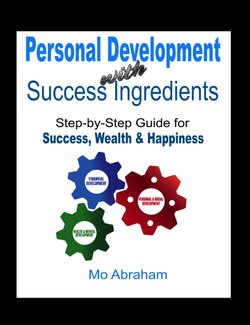Читать книгу Personal Development With Success Ingredients - Mo Abraham - Страница 224
На сайте Литреса книга снята с продажи.
One: Self-Help Techniques
ОглавлениеOnce learned, self-help relaxation techniques are particularly useful as they are available to the stressed individual whenever the need arises and allow one to gain control over feelings and anxieties.
A very wide range of relaxation techniques have been developed, although many can be seen as variations on a number of basic methods, focusing on the physical feelings of tension, or using mental imagery to induce calm.
Perhaps the most powerful method of relaxation is mindfulness. At it's simplest mindfulness is focusing on the current moment, the here and now and allowing, through a type of meditation, worries about the future or regrets about the past to melt away.
Some of the more familiar self-help relaxation techniques available include:
•Creative Visualization – Imagine yourself lying in a cornfield, in a hammock by the sea, sitting in a deck chair, or anywhere you feel relaxed and hear the sounds of the trees, wind and waves. Being immersed in such a serene scene induces a state of relaxation and tension should drain away.
•Quieting – Aims to provide a way of diverting the mind from stressful thoughts by focusing on more relaxing emotions: for example, chanting, focusing on breathing, counting things such as instances of a particular colour.
•Progressive Relaxation – This involves tensing and then relaxing each part of the body in turn, working up through the whole body until completely relaxed. This technique takes about 20-30 minutes to complete and is very effective at bringing about physical relaxation.
•Tension Recognition – One form of this therapy involves intentionally clenching groups of muscles in successive areas of the body, for example the hand, shoulders and stomach, concentrating on the tension, feeling it, and then relaxing. The aim is to encourage the recognition of tension when it occurs and to voluntarily relax the muscles when they tense. However, with the very highly stressed, this form of tension recognition could possibly lead to muscle cramps so a second version is preferred. This alternative approach involves stretching rather than tensing the muscles and requires some knowledge of human musculature. Successive muscles are stretched so that opposing muscles contract, and the process is then reversed. The aim is to find the halfway point, where opponent muscles are balanced, and then to relax further.
•Breathing Exercises – These can be used to help relax the entire body as tension leads to breathing too rapidly. Such techniques teach you to breathe calmly and deeply and encourage awareness of bodily tension.
